Unusual forms of ancient currency
 Bashny.Net
Bashny.Net
Money. Only when one word in humans there is a lot of feelings, thoughts and emotions. But you would be willing to take a pay bar instead of the usual salt or a huge stone?
Since olden times people attributed cash value different subjects and used as money amazing objects of different shapes, sizes and formats. Although much of this so-called currency today is impractical and inappropriate, it serves as an important reminder that people appreciated in the past and why.
In this article we look at ten incredible examples, which are completely different from what we now call a familiar word "money».
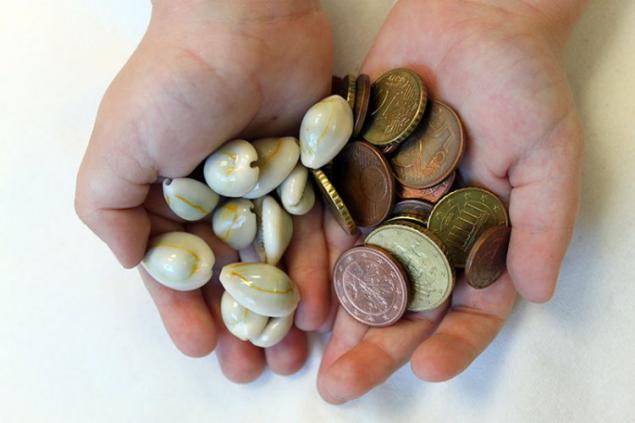
10. Teeth dolphins
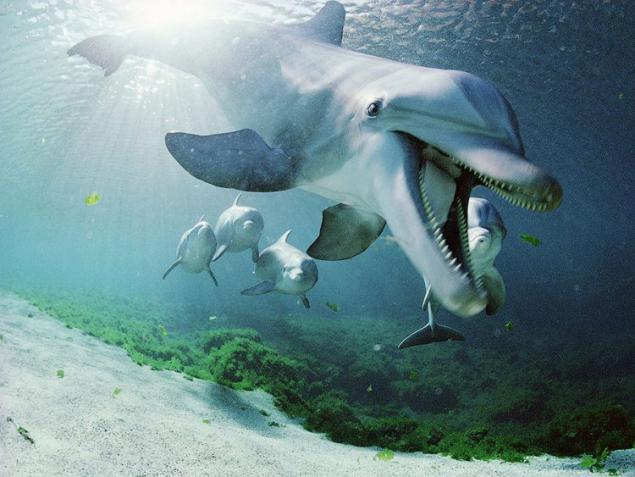
Probably the most strange and terrible currency antiquity - a teeth dolphins that were used in the Solomon Islands for several centuries, according to old traditions. In 2008, the dollar has depreciated on the island. Locals in response began to accumulate money, which in turn has led to a shortage of coins and further aggravated the situation. As a result of the circumstances in some parts of the islands people decided to return to the traditional currency - the teeth of dolphins. Incredibly, the cost of teeth of mammals has increased almost 4 times. Local hunter dolphins Sukufatu Henry said: "Money is the white man sooner or later run out, and the teeth of dolphins - never».
In January 2013, local newspapers were full of headlines that the inhabitants of the island of Malaita butchered 900 dolphins kind of Bottlenose dolphins because of a dispute with a group of environmentalists. The Islanders have confirmed that they have renewed the annual shooting dolphins after the American environmental organization has not paid them the full agreed compensation for refusing to hunt marine mammals.
9. squirrel skins
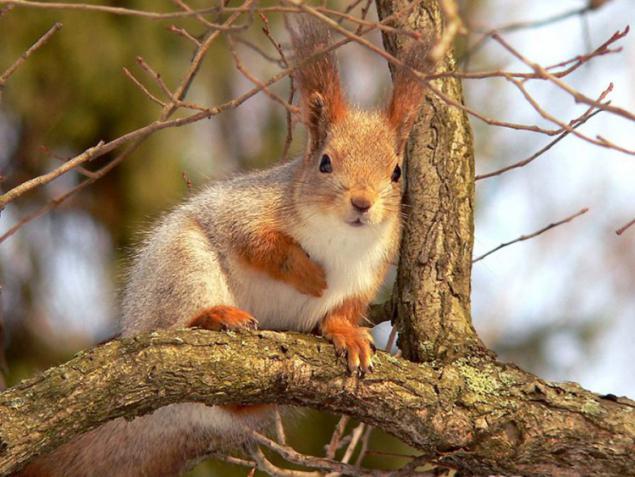
For a long time pelts play an important role in the exchange and trade. In medieval times, the most valuable of all the fur was considered proteins, so it became a common form of currency in Finland and Russia. Some believe that the killing of protein for the money saved by coincidence, a significant portion of the Russian population of the bubonic plague. While Russia has used not only squirrel pelts, but also faces and claws of these animals. Presumably, in Finland squirrel skins still accepted as means of payment, as well as give them a use value and exchange value. So if you suddenly hear someone in Finland utter the word "squirrel skins", you know that we can talk about money.
8. Salt

Salt for thousands of years was considered a valuable commodity. She played a significant role in the development of early civilizations. Mention of it there are a few important religious traditions and texts. In 2200 BC, the Chinese Emperor Yu the Great salt paid first recorded in the history of tax payment. The introduction of the salt tax was one of the causes of the French Revolution. The product itself has also played an important role in the US Civil War. Moreover, in ancient Rome, soldiers were often paid for their service with salt. And even today, some nomadic peoples of Ethiopia as the currency used "white death».
7. Black Pepper

In ancient Greece, the deficit of black pepper was the cause of his unprecedented value. According to historical sources, in the V century, the first king of the Visigoths, Alaric and Attila the Hun leader captured Rome and demanded that the residents of the city as a ransom huge amount of black pepper.
In the Middle Ages, pepper was the accepted form of currency. In the XV century the demand for the spice in Europe has grown so much that this fact has played a huge role in the development of sea routes to the Far East. Because of the high cost of the spice called "black gold" and until the XIX century it was considered a luxury that can afford only the very rich. Today, black pepper is the most widespread spice in the world.
6. Wampum (beads)

America became the first exchange beads - in particular, wampum. This is a traditional handmade beads made of white and purple shells of gastropods and bivalves. When European settlers landed on the shores of North America in the beginning of XVI-XVII centuries., They noticed that the indigenous people were treated in a special way to wampum, considering them sacred and valuable items. The colonists also found that Native Americans are more willing to share much-needed supplies, if offered to them in exchange of wampum. So, necklaces made of shells have become the official currency, although the indigenous people of North America did not regard them as money. After some time in European factories began mass production of wampum. However, ultimately, in 1663 beads made of shells were withdrawn from circulation in the colonies of New England - although in New York, they remained legal tender until the beginning of the XVIII century; and some European refineries continued production of wampum before the start of the 1900s.
5. Tea bricks

Another amazing ancient form of currency steel tea bricks. For the production of this valuable product stems and leaves of the tea bush mixed with various herbs, and sometimes dry wood chips. The resulting mixture is shaped bricks binder served as the blood of a bull or droppings. By tradition, the tea bricks portrayed Chinese characters or applied unique patterns and designs. In the XIX century, they began to be used as currency in China, Russia, Tibet, Siberia and Mongolia. For 12 of these blocks could buy one ram, 20 - to buy a horse. In Siberia during World War II, tea bricks used in food, as well as used as a medicine.
4. Rai stones
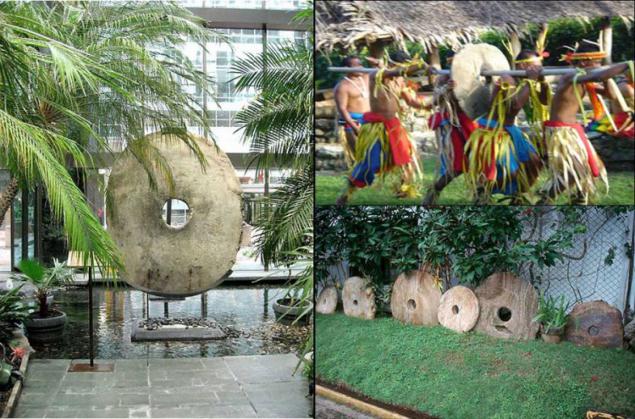
For someone to size, maybe it does not matter, but not for the island of Yap (Micronesia). There is every reason to believe that they started their Rai stones back in the year 500 AD. For the manufacture of such an unusual form of currency they needed limestone, which can only be found on the neighboring island of Palau. There they hew stone huge circular disks with a hole in the center and then transported them back to Yap. Some stones diameter was more than 3, 5 meters and weighed more than 4 tons. Cost stones defines the process for their manufacture - is extremely dangerous, and sometimes even fatal. After Rai stones were used as a means of payment, the place of their situation often remained unchanged. In fact, in the physical exchange was not necessary, since all already knew who owns Rai. The value of the stones fell from the arrival of the Europeans, whose technology has greatly facilitated the process of their manufacture. Today Rai stones participate in various rituals and ceremonies, as well as the national symbol of the Federated States of Micronesia.
3. cowrie shells

Cowrie shells (shells of porcelain snails) are one of the earliest forms of the old currency. They are small in size, light and durable, besides they are very difficult to fake (though some people still manage to make fake cowrie shells from materials such as horn, bone, lead, and even silver and gold). Of cowries also produced stunning jewelry and ornaments. First cowrie shells began to be used as a medium of exchange in China at the beginning of the XVI century BC. Later this type of currency circulated in the largest shopping areas of Africa, Arabia, in some parts of Europe and Asia.
2. Arrowheads

This truly marvelous ancient type of currency originated in the northern part of the Black Sea. At the beginning of VII century arrowheads were used as money in an area known as the Great Scythia, which covered the lands of modern Ukraine, Central Asia, Eastern Europe, North Caucasus and part of Russia. Bronze arrow appeared long before the usual ancient coins and highly regarded for the strength and the ability to use as a weapon.
1. Knives
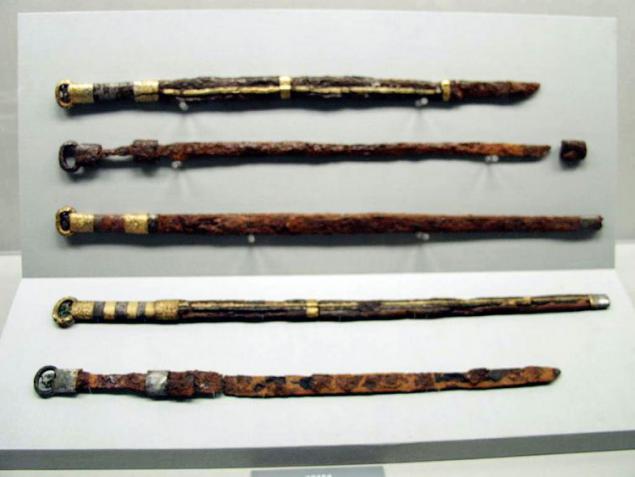
As arrowheads, knives, ancient Chinese were and weapons, and currency. Money-knives are an indication that people appreciate at the time. This extraordinary currency first appeared in China around 600 BC, during the reign of the Zhou Dynasty. Historians believe that the coins in the form of knives were modeled on knives, scrapers, used by nomadic hunters in the northern and eastern parts of the country. On money-knives often scratch out a number or individual words - such as "sheep" or "fish" - that is most likely determined the value of each coin. On all coins also present an inscription indicating that they were the official currency. Knives were used as money in a few hundred years before, as long as China's first emperor Qin Shi Huang did not cancel this currency and said that from now on the only legal tender coins are round with a square hole in the middle.
Since olden times people attributed cash value different subjects and used as money amazing objects of different shapes, sizes and formats. Although much of this so-called currency today is impractical and inappropriate, it serves as an important reminder that people appreciated in the past and why.
In this article we look at ten incredible examples, which are completely different from what we now call a familiar word "money».

10. Teeth dolphins

Probably the most strange and terrible currency antiquity - a teeth dolphins that were used in the Solomon Islands for several centuries, according to old traditions. In 2008, the dollar has depreciated on the island. Locals in response began to accumulate money, which in turn has led to a shortage of coins and further aggravated the situation. As a result of the circumstances in some parts of the islands people decided to return to the traditional currency - the teeth of dolphins. Incredibly, the cost of teeth of mammals has increased almost 4 times. Local hunter dolphins Sukufatu Henry said: "Money is the white man sooner or later run out, and the teeth of dolphins - never».
In January 2013, local newspapers were full of headlines that the inhabitants of the island of Malaita butchered 900 dolphins kind of Bottlenose dolphins because of a dispute with a group of environmentalists. The Islanders have confirmed that they have renewed the annual shooting dolphins after the American environmental organization has not paid them the full agreed compensation for refusing to hunt marine mammals.
9. squirrel skins

For a long time pelts play an important role in the exchange and trade. In medieval times, the most valuable of all the fur was considered proteins, so it became a common form of currency in Finland and Russia. Some believe that the killing of protein for the money saved by coincidence, a significant portion of the Russian population of the bubonic plague. While Russia has used not only squirrel pelts, but also faces and claws of these animals. Presumably, in Finland squirrel skins still accepted as means of payment, as well as give them a use value and exchange value. So if you suddenly hear someone in Finland utter the word "squirrel skins", you know that we can talk about money.
8. Salt

Salt for thousands of years was considered a valuable commodity. She played a significant role in the development of early civilizations. Mention of it there are a few important religious traditions and texts. In 2200 BC, the Chinese Emperor Yu the Great salt paid first recorded in the history of tax payment. The introduction of the salt tax was one of the causes of the French Revolution. The product itself has also played an important role in the US Civil War. Moreover, in ancient Rome, soldiers were often paid for their service with salt. And even today, some nomadic peoples of Ethiopia as the currency used "white death».
7. Black Pepper

In ancient Greece, the deficit of black pepper was the cause of his unprecedented value. According to historical sources, in the V century, the first king of the Visigoths, Alaric and Attila the Hun leader captured Rome and demanded that the residents of the city as a ransom huge amount of black pepper.
In the Middle Ages, pepper was the accepted form of currency. In the XV century the demand for the spice in Europe has grown so much that this fact has played a huge role in the development of sea routes to the Far East. Because of the high cost of the spice called "black gold" and until the XIX century it was considered a luxury that can afford only the very rich. Today, black pepper is the most widespread spice in the world.
6. Wampum (beads)

America became the first exchange beads - in particular, wampum. This is a traditional handmade beads made of white and purple shells of gastropods and bivalves. When European settlers landed on the shores of North America in the beginning of XVI-XVII centuries., They noticed that the indigenous people were treated in a special way to wampum, considering them sacred and valuable items. The colonists also found that Native Americans are more willing to share much-needed supplies, if offered to them in exchange of wampum. So, necklaces made of shells have become the official currency, although the indigenous people of North America did not regard them as money. After some time in European factories began mass production of wampum. However, ultimately, in 1663 beads made of shells were withdrawn from circulation in the colonies of New England - although in New York, they remained legal tender until the beginning of the XVIII century; and some European refineries continued production of wampum before the start of the 1900s.
5. Tea bricks

Another amazing ancient form of currency steel tea bricks. For the production of this valuable product stems and leaves of the tea bush mixed with various herbs, and sometimes dry wood chips. The resulting mixture is shaped bricks binder served as the blood of a bull or droppings. By tradition, the tea bricks portrayed Chinese characters or applied unique patterns and designs. In the XIX century, they began to be used as currency in China, Russia, Tibet, Siberia and Mongolia. For 12 of these blocks could buy one ram, 20 - to buy a horse. In Siberia during World War II, tea bricks used in food, as well as used as a medicine.
4. Rai stones

For someone to size, maybe it does not matter, but not for the island of Yap (Micronesia). There is every reason to believe that they started their Rai stones back in the year 500 AD. For the manufacture of such an unusual form of currency they needed limestone, which can only be found on the neighboring island of Palau. There they hew stone huge circular disks with a hole in the center and then transported them back to Yap. Some stones diameter was more than 3, 5 meters and weighed more than 4 tons. Cost stones defines the process for their manufacture - is extremely dangerous, and sometimes even fatal. After Rai stones were used as a means of payment, the place of their situation often remained unchanged. In fact, in the physical exchange was not necessary, since all already knew who owns Rai. The value of the stones fell from the arrival of the Europeans, whose technology has greatly facilitated the process of their manufacture. Today Rai stones participate in various rituals and ceremonies, as well as the national symbol of the Federated States of Micronesia.
3. cowrie shells

Cowrie shells (shells of porcelain snails) are one of the earliest forms of the old currency. They are small in size, light and durable, besides they are very difficult to fake (though some people still manage to make fake cowrie shells from materials such as horn, bone, lead, and even silver and gold). Of cowries also produced stunning jewelry and ornaments. First cowrie shells began to be used as a medium of exchange in China at the beginning of the XVI century BC. Later this type of currency circulated in the largest shopping areas of Africa, Arabia, in some parts of Europe and Asia.
2. Arrowheads

This truly marvelous ancient type of currency originated in the northern part of the Black Sea. At the beginning of VII century arrowheads were used as money in an area known as the Great Scythia, which covered the lands of modern Ukraine, Central Asia, Eastern Europe, North Caucasus and part of Russia. Bronze arrow appeared long before the usual ancient coins and highly regarded for the strength and the ability to use as a weapon.
1. Knives

As arrowheads, knives, ancient Chinese were and weapons, and currency. Money-knives are an indication that people appreciate at the time. This extraordinary currency first appeared in China around 600 BC, during the reign of the Zhou Dynasty. Historians believe that the coins in the form of knives were modeled on knives, scrapers, used by nomadic hunters in the northern and eastern parts of the country. On money-knives often scratch out a number or individual words - such as "sheep" or "fish" - that is most likely determined the value of each coin. On all coins also present an inscription indicating that they were the official currency. Knives were used as money in a few hundred years before, as long as China's first emperor Qin Shi Huang did not cancel this currency and said that from now on the only legal tender coins are round with a square hole in the middle.
Tags
See also
Where to attach the old bank?
Top 10 most unusual viewing platforms in the world
8 unusual modes of transport
Clouds of unusual shape (12 photos)
10 of the most unusual forms of contemporary art
We found a lot of money and returned them
Per-frame photo
Seemingly molds for ice ...
Felines
An interesting variant forms of money

















